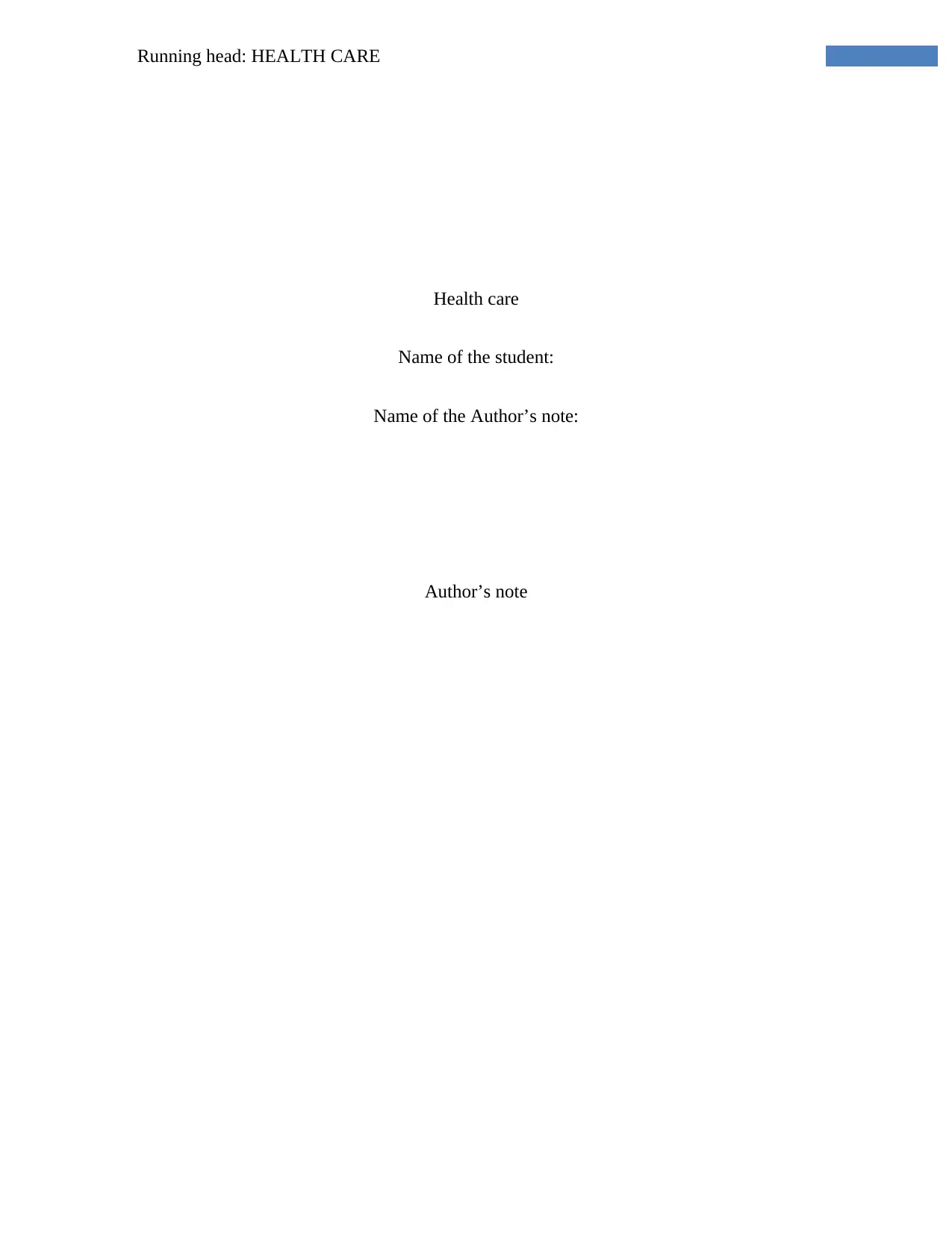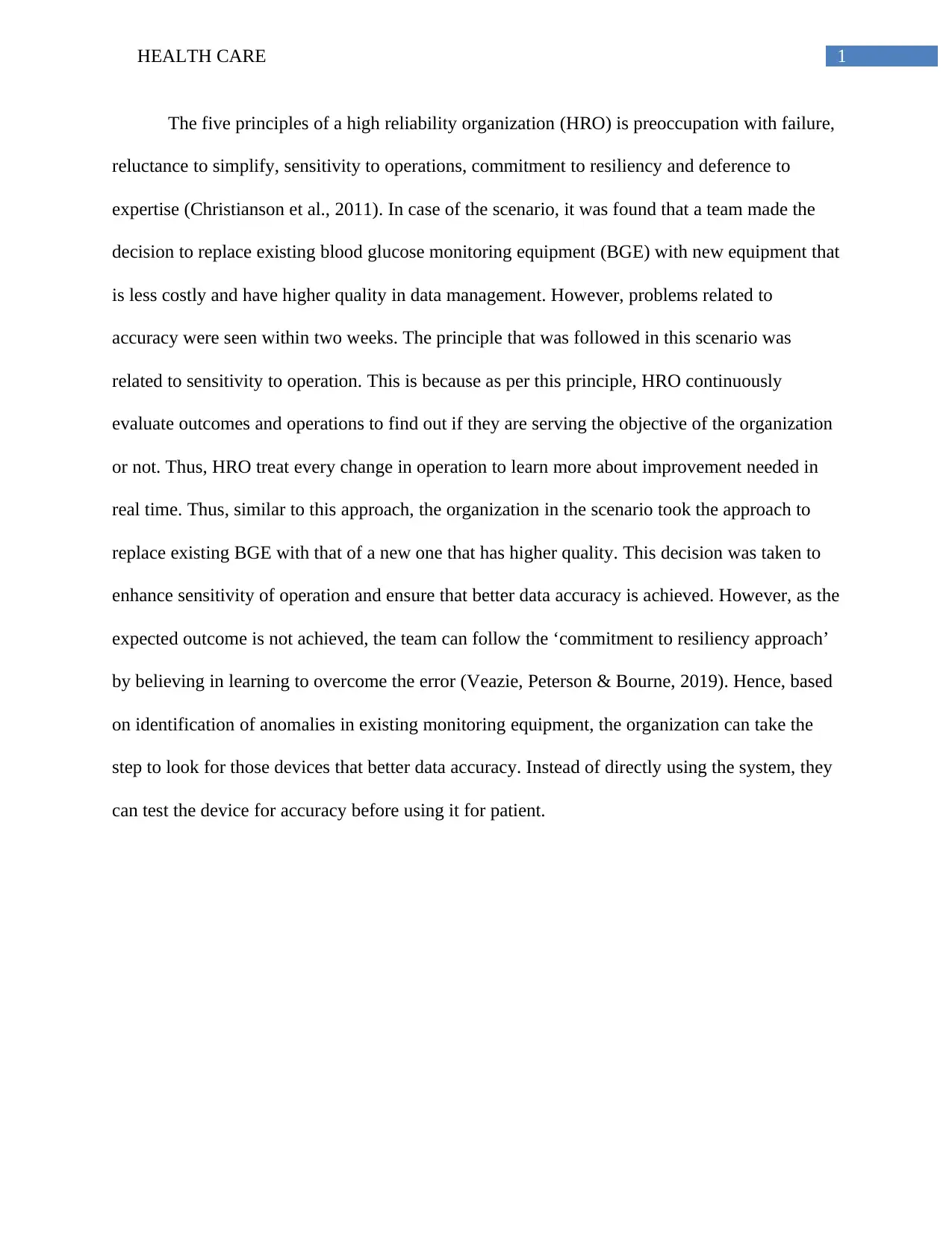Healthcare: Application of HRO Principles in Blood Glucose Monitoring
VerifiedAdded on 2022/08/21
|3
|390
|17
Report
AI Summary
This report examines the application of High Reliability Organization (HRO) principles in a healthcare setting, specifically focusing on blood glucose monitoring. The report discusses the importance of the 'sensitivity to operations' principle, highlighting how an organization's decision to replace existing blood glucose monitoring equipment with a new system aimed to improve data accuracy. However, the report also addresses the subsequent problems encountered, emphasizing the need for 'commitment to resiliency'. The author suggests that the organization should test new equipment for accuracy before implementation. Overall, the report provides a detailed analysis of how HRO principles can be applied to enhance patient safety and operational effectiveness in healthcare.
1 out of 3




![[object Object]](/_next/static/media/star-bottom.7253800d.svg)